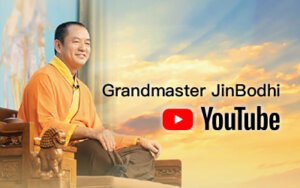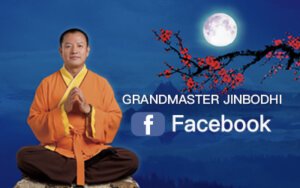
Meditation is a method which facilitates the development and improvement of the mind. What are the physical and mental benefits of meditation? Are there certain methods that allow us to get better results? What meditation techniques can beginners learn? This article is a simple guide to get you started on meditation.
The Benefits of Meditation
1. Promotes physical and mental health
In recent decades, scientific researchers have confirmed that meditation offers various benefits to the human body. It can relieve stress, reduce anxiety, and enhance memory and concentration. Regular meditation can boost academic performance and work efficiency. Research has also shown its potential to reduce insomnia, alleviate chronic pain, decrease blood pressure, and reduce cardiovascular and cerebrovascular diseases to a significant degree.1
Nowadays, more and more people are practicing meditation to heal body and mind. In 2016, Sharon Lauricella from the University of Ontario Institute of Technology in Canada published a meta-analysis consisting of 764 English articles on meditation and its benefits, all of which had appeared in mainstream print media worldwide from 1979 to 2014. This research clearly indicated that over the years more and more people have come to recognize the value of meditation and its techniques . In the same year, the team of American neurologist Richard Davidson found that daily meditation and long-term persistence in practice can reduce the speed of aging.
2. Improves happiness index
Research conducted by Richard Davidson’s team also found that when the body and mind are relaxed to a certain level, not only can our brain cells regenerate but our brain nerves can generate new connections. Matthieu Ricard, declared “the happiest person in the world” by the British newspaper The Independent, is an expert in meditation with many years of experience. After testing the waves emitted by his brain, researchers discovered that the part of his brain responsible for happiness and positive emotions is highly active. Other scientific research has proven that the areas of the brain specializing in negative emotions are greatly suppressed in people who meditate regularly over a long period of time, while the areas that control happiness and positive emotions are activated.
Choosing the Right Environment, Time and Posture
1. Environment
First and foremost, meditation requires a clean and quiet environment with good ventilation. A clean space makes people feel comfortable and willing to discharge negative energy out of the body. Fresh air increases the oxygen level in the blood and the brain, which is beneficial for physical and mental health. A quiet environment allows people to remain disturbed and more importantly, to avoid being frightened; sudden noise or sharp sounds can stimulate and negatively affect the brain.
Inside the meditation room, avoid overly bright and bold colors such as red and yellow because bright hues are stimulating and thus not conducive to mental and physical relaxation. Likewise, too many different colors can be disruptive to harmony of body and mind. Don’t use black paint or wallpaper, as dark hues create a negative mood. It is best to use a single color or shades of the same color family; a monochromatic room is soothing and facilitates concentration.
Be careful about wind. Do not open a small gap in the window. The wind entering the room from a narrow gap is called “evil wind,” and it can seriously harm health.
If you’re practicing outdoors, choose a quiet grassy field that’s not too remote. The fresh, natural environment will bring positive energy to you.
2. Time for meditation
A day’s plan starts with the morning. At this time, the brain is in the purest state, undisturbed by worldly issues. Practicing meditation in the morning can be extremely effective at encouraging calmness of body and mind, mental clarity and buoyancy of mood, all of which carries over into the rest of the day.
For those with busy schedules such as office workers, noon and evening are also suitable for meditation. Close your eyes, sit down quietly and reflect on yourself. Let your heart slowly calm down and your fatigue disappear into the silence. A few minutes of meditation can help you refresh your energy level more than a nap. Before you go to bed, meditating even for five or 10 minutes will help you sleep and prime your energy for the next day.
Generally speaking, you can meditate anytime except for when you are hungry or full, or when weather conditions are extreme such as a thunderstorm.
3. Postures for meditation
The postures for meditation include sitting, standing and kneeling. The standing posture in The Meditation of Greater Illumination taught by Grandmaster JinBodhi requires feet to be shoulder-width apart; this stance is conducive to body stability, relaxation and smoothness. The kneeling position can help you avoid drowsiness and improve concentration. It is usually used while chanting the Buddha’s name or mantras. Through the coordination of sound and posture, you can gradually enter a state of emptiness. If you feel tired while kneeling, you can sit on your heels to relax your waist.
Common postures for meditation are sitting positions including normal cross-legged, half lotus and full lotus. You can also sit on a chair. Beginners can practice in the normal cross-legged position with a cushion supporting the back. When your body becomes more flexible, you can try the half-lotus position by placing either the right or left foot on top of the opposite thigh. The full-lotus position involves placing each foot on top of the opposite thigh.
Prepare a cushion designed for meditation. Keep the upper body upright and the spine naturally curved while you meditate. The posture for meditation resembles the shape of a pyramid. Maintaining this posture can create the strongest sensations and allow you to receive energy quickly.
How to practice meditation: meditation tips for beginners
1. Preparation: Relax the body and warm up the joints
Common preparation activities include deep breathing and warming up your joints. Relaxing the body helps you to enter a state of emptiness faster. Getting your joints warm and limber before meditation prevents joint injuries arising from standing, sitting or kneeling for a long period of time.
To practice smoothly, before starting meditation, you must focus on the thought of not being disturbed by external sounds by praying for the protection and blessing of the Buddha, Bodhisattva or your master.
2. The process of entering meditation: listening to guiding music
For beginners, it is best to listen to guiding music. The beautiful melody can soothe the mind, help the meditator to visualize a peaceful image, and support them in entering a meditative state quickly. Only when the body and mind experience a certain degree of tranquility can you obtain good health effects.
On Grandmaster JinBodhi’s YouTube channel, various pieces of meditation music are suitable for beginners. Even if you don’t enter into meditation, you’ll still get energy and healing effects by just opening an energy-blessing video and hearing the beautiful sounds within it.
3. Relaxation after meditation: patting the body
After opening your eyes and emerging from the meditative state, move slowly to ease your body into being fully awake. You can warm your hands by rubbing them together, gently pat your head, rub the back of your neck, slowly move your waist, and relax your body by patting yourself down from top to toe. These closing exercises allow your mind to return to reality as soon as possible from the deep quiet state of meditation. You will be full of energy and ready to face work and family life with renewed inspiration.
Professional Meditation Guidance: An inspiring journey of physical and spiritual cleansing
Grandmaster JinBodhi began practicing meditation in childhood. He has studied with many famous masters and spent years exploring the world of meditation. Vowing to help others, he established an international meditation organization, Bodhi Meditation, to teach extraordinary meditation practices to people all over the world.
Bodhi Meditation provides a variety of courses. Meditators with no foundation can easily reach a relatively pure and calm state. The methods taught at Bodhi Meditation include The Meditation of Greater Illumination practiced in a standing position, The Meditation of Purity practiced in a sitting position, and the chanting of mantras and buddha names. Recordings are available of Grandmaster JinBodhi chanting all the mantras and buddha names, including Sakyamuni Buddha, Guanyin Bodhisattva, The Six-Syllable Mantra, The Earth Store Bodhisattva’s (Ksitigarbha) Heart Mantra, Medicine Buddha’s Heart Mantra, and more. You don’t have to chant or visualize; just relax and receive the healthy energy blessing by listening to the beauty of Master sounding the chime, playing the guzheng or singing.
Ways to obtain music for meditation:
Sample Music: Cibeiyin
Watch an energy-blessing session or follow chanting videos: Grandmaster JinBodhi’s YouTube channel
References:
- 12 Science-Based Benefits of Meditation
https://www.healthline.com/nutrition/12-benefits-of-meditation
2.The Ancient-Turned-New Concept of “Spiritual Hygiene”: An Investigation of Media Coverage of Meditation from 1979 to 2014
https://pubmed.ncbi.nlm.nih.gov/27234639/
- Epigenetic clock analysis in long-term meditators

